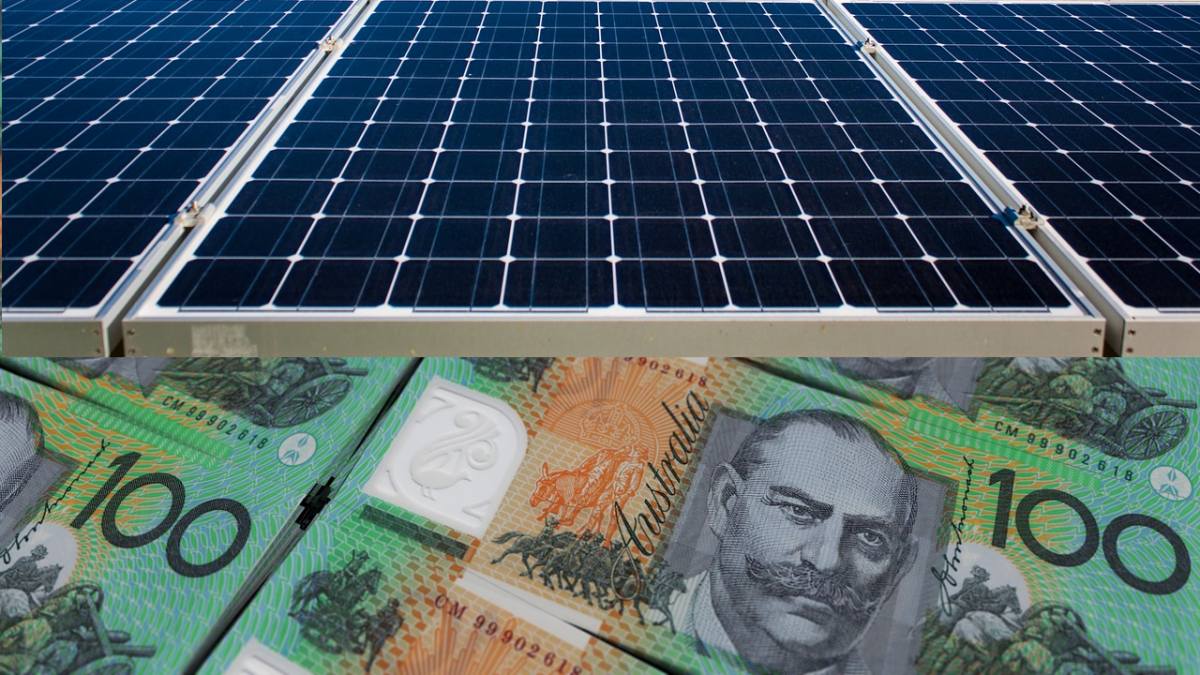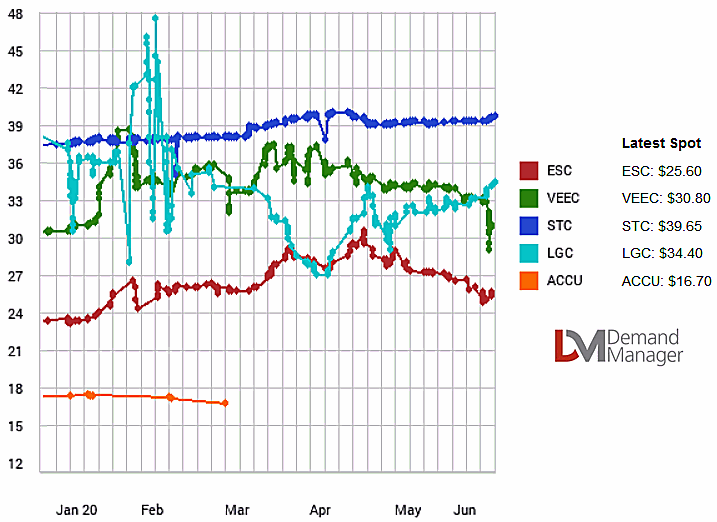Small-scale Technology Certificate values have generally remained above the $39 mark for a few months now – if you’re considering going solar, here’s why you should care.
Australia’s “solar rebate” is based on Small-scale Technology Certificates (STCs). These certificates have a monetary value that fluctuates with market conditions. The number of certificates an eligible solar power system installation is entitled to depends on the system size, installation date and where in Australia it was installed.
STCs can’t be created until after a system is installed, but their value is usually factored in as an up-front discount on a solar system; with the installer or its agents claiming the STCs and cashing them in later.
The maximum possible STC value is $40 and the minimum $0.
STC Spot Prices In 2020
According to the latest information from DemandManager, the STC spot price last Thursday was $39.65 – down a touch from when we last reported in April, but still bumping up pretty close against the maximum value of $40.
Here’s a graph from DemandManager that I’ve somewhat butchered showing recent STC spot prices (in blue).
To give you an idea of how much this translates to in total subsidy based on $39.65, a 6.6kW solar system that has been installed in Melbourne would be entitled to 86 STCs – so around $3,410 subsidy. However, SolarQuotes founder Finn has previously pointed out installers will generally offer $2-3 less than the STC spot price to cover the admin cost of trading the certificates; so that brings the subsidy down to around the $3,150 mark. Given the hassle involved with selling your own STCs, it’s probably worth the admin charge – and letting the solar company deal with that side of things is what the majority of solar buyers do.
If you’d like to find out how many STCs a system installed in your location would be entitled to, try our STC calculator – it’s one of the many handy solar calculators and tools SQ offers.
As mentioned in April, whether STC prices will remain above $39 for the foreseeable future is anyone’s guess – and it’s worth bearing in mind the minimum value is $0. While prices have never been anywhere near that low, in July 2017 STC value plummeted to as low as $26. Based on the 6.6kW system example mentioned above, that would mean a subsidy of $2,236 (minus whatever admin fee) – $1,174 less than the current $39.65 scenario.
As far as I know, the lowest STC spot prices have been is $17.50 – and that was some years back.
While the potential for STC spot prices to drop is there, it’s unlikely to very suddenly fall off a cliff – i.e., solar shoppers shouldn’t panic buy and do their research first before signing on the dotted line for a system.



 RSS - Posts
RSS - Posts



Any chance you could do an article on how to claim STC yourself. I’m looking to buy a heat pump and I would be better off ($400) claiming it myself rather than the seller.
HI there,
How much should I pay for 6.6 kw system with good panels ,long warranty and good inverter just to add I had two quotes miles apart , much appreciated if you give me some advice .
Regards, BILL
Hi Bill
There can be a lot of difference between both the quality of the materials used and the quality of installation for solar systems.
Our Solar 101 Guide:
https://www.solarquotes.com.au/solar101.html
Has 3 graphics that contain all the brands of solar panels, inverters, and racking systems we recommend. They are arranged from the lowest cost on the left to the most expensive and higher quality on the right. This should let you see where the brands listed in your quote fall from cheap to expensive. If the brands aren’t on our lists then I recommend doing more research into their quality before paying for them.
The quality of installers also varies greatly. I suggest looking up their reviews online to see if they do good work. I’d also check to see how they resolve issues if there is a problem. If you are looking at our review pages I suggest clicking on “Ausrankings” to see how the installer compares to others in Australia.
If you haven’t already done so and wish to receive quotes from installers we have vetted and know good work, you can go to our homepage:
https://www.solarquotes.com.au/
And enter your postcode in the space at the top right and then fill in the questions that come up as best you can.
Trees are a factor in my step son’s north facing home, it has been suggested to have half the panels on the southern side as the roof pitch is only 18 degrees. Would this work? The location is Clare SA postcode 5453. Thank you.
On a roof with a pitch of 18 degrees south facing panels around Adelaide will produce 24% less energy than north facing ones. This can be better than heavily shaded north facing panels so it can make sense and the system can still pay for itself. Summer production will be considerably higher than in winter with generation in the worst month, June, only averaging 37% of generation in the best month, January.